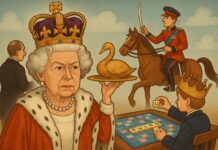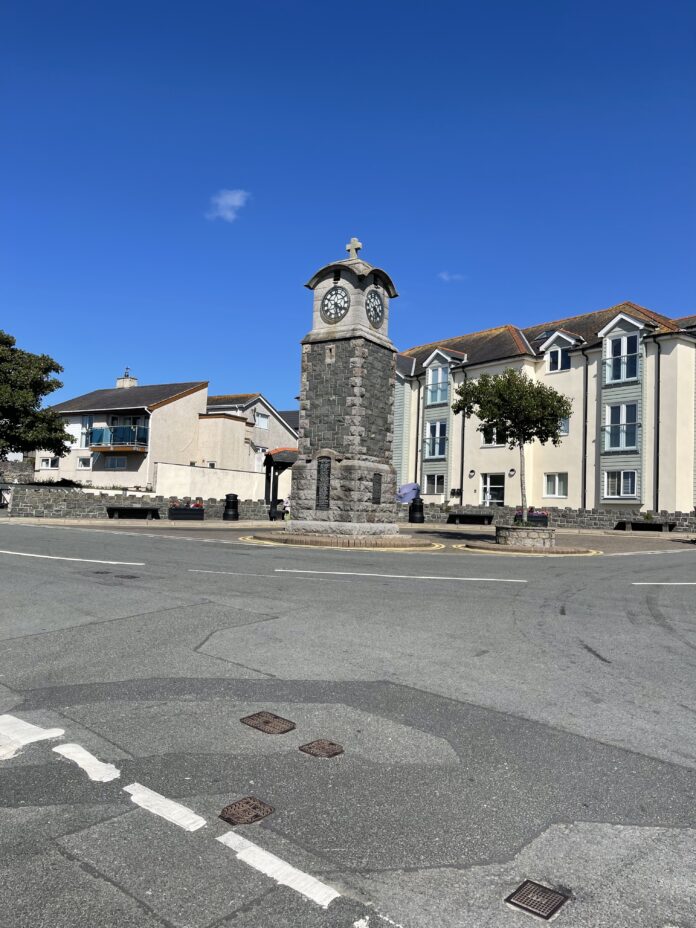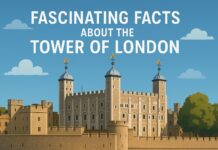The Rhosneigr War Memorial is a clock tower in the village of Rhosneigr on the Isle of Anglesey, Wales. It is also known as Llanfaelog Parish Clock Tower. It was built in the 1920s to commemorate the residents of Rhosneigr who were killed or missing in World War I. A plaque was added to the memorial after World War II to commemorate those who died in that war. The memorial is a Grade II Listed Building, which means it is considered a building of special architectural or historic interest. This clock tower memorial stands as one of only four on the island. It serves as a fitting tribute to the courageous men and women from the town who made the ultimate sacrifice for the sake of our freedom.
Location
It is located at the junction of Ffordd Maelog and Station Road in Rhosneigr. The clock tower is centrally located in ‘The Square’ on the junction of the A4080 (Station Road) and Glan Y Mor Road.
Location: Prominently sited in the centre of Rhosneigr; located at the junction of the A4080, Ffordd Maelog and Station Road, where the roads form a crossroads with Beach Road and the High Street.
County: Isle of Anglesey
Community: Llanfaelog
Locality: Rhosneigr
Built-Up Area: Rhosneigr
Traditional County: Anglesey
Country: Wales
Latitude: 53.2285 / 53°13’42″N
Longitude: -4.5201 / 4°31’12″W
OS Eastings: 231878
OS Northings: 373130
OS Grid: SH318731
Mapcode National: GBR 56.0LGD
Mapcode Global: WH42X.J3SR
Plus Code: 9C5Q6FHH+CX
History of Rhosneigr War Memorial
The history of the Rhosneigr War Memorial is a poignant reflection of the town’s deep reverence for the sacrifices made by its servicemen and women. Erected as a symbol of remembrance, this memorial holds a significant place in the heart of the community. It was built in the 1920s.
The idea for the memorial emerged in the aftermath of World War I, a period marked by profound loss and a collective desire to honour those who had given their lives. In this context, the plans for the memorial took shape, intending to create a lasting tribute to the local heroes who had made the ultimate sacrifice.
Commemoration: First World War (1914-1918), Second World War (1939-1945), Second World War – civilians
Maker: Griffith Owen, ‘Tegfryn’ Rhosneigr
Ceremony Unveiled: Date: 24 August 1921, Attended by: Dame Megan Lloyd George
This memorial is a civic clock tower which is believed to have been built c. 1921 by John Smith & Sons of Derby to commemorate those from Rhosneigr who were killed in World War I; a subsequent plaque was added after World War II commemorating those who were killed. It is currently maintained by a part of the same group which produced it in the 1920s
Design and Exterior of Rhosneigr War Memorial
It is 30 feet tall and has three stages. The upper stage has clock faces on each side. The top of the memorial is topped with a plain cross. Rhosneigr war memorial is a clock tower approximately 8-9 metres high. It is composed of many materials, such as limestone, slate rubble, brick and a hardwood door. This choice of materials probably reflects its seaside location and exposure to the elements.
Its architecture and symbolism were meticulously considered to reflect the community’s resilience, bravery, and unity in times of adversity.
The clock tower at the Rhosneigr War Memorial is divided into three sections. The lowest part is made of rough-textured limestone blocks. It has a base with a raised platform, and the top part has an angled structure made of finely cut ashlar stone.
On the front side of the tower, facing the northwest is a curved recess with an arched shape. The arch is decorated with flowery designs at the ends. Inside this recess is a plaque commemorating the men from Rhosneigr who lost their lives in the First World War.
The back side of the tower, facing the southeast, has a similarly detailed recess containing an arched doorway.
On the southwest side of the tower, there is a smaller recess with an arched shape. This plaque was added after the Second World War to honour those who served in that conflict.
The second section of the tower is covered with granite blocks that have a rough texture. The tower’s corners have limestone blocks, and narrow windows are on the lower southeast and upper northwest sides. These windows have limestone frames and provide light to the tower’s interior.
The uppermost section of the tower, where the clock is located, is made of finely cut limestone blocks. It is set above a stepped structure that slopes backwards. Each side of the tower has a clock face with detailed markings. On top of the tower is a domed roof with a plain cross.
When you look at the memorial, you first notice a tall clock tower. This clock tower is like a big clock that tells time but is also a way to remember the heroes. The clock tower is strong and stands tall, like a sign of how strong and brave the people from the town were.
The way the memorial looks is important. It’s not just a tower with a clock. The people who designed it thought carefully about how it should look. They wanted it to feel serious and important, like a place where we can remember and think about the sacrifices of brave servicemen and women.
Time To Access
Accessible year-round. The site is open and accessible year-round.
Name Listed on Rhosneigr War Memorial
The Rhosneigr War Memorial lists the names of 68 men and 2 women who died in World War I and World War II. Here is the list of few names
World War I
- Albert Edward Lewis
- Arthur John Morgan
- Arthur Thomas Hughes
- Benjamin Jones
- Charles Edwards
- David Jones
- Edward Jones
- Evan David Jones
- George Arthur Jones
- George Roberts
- Griffith Owen Jones
- Henry Jones
- Hugh Thomas Jones
- John Jones
- John Owen Williams
- Lewis Owen Jones
- Richard Thomas Jones
- Robert Griffith Jones
- Robert Thomas Jones
- Thomas Jones
- William Jones
- William Owen Jones
World War II
- Arthur James Rowlands
- David John Jones
- David Owen Jones
- Elwyn James Jones
- Evan Thomas Jones
- George Henry Jones
- Harold James Jones
- John Thomas Jones
- Lewis Owen Jones
- Robert William Jones
- Thomas Jones
- William Thomas Jones
This is not an exhaustive list, as other names may not be listed here.
Rhosneigr War Memorial Photos
The Rhosneigr War Memorial is not just a thing made of stone and metal. It’s a way for the town to say “thank you” and to remember the heroes who did something very important for all of us. It’s a place that reminds us always to remember and honour their courage and sacrifice.
Over the years, the Rhosneigr War Memorial has become a central gathering point for commemorative events, serving as a backdrop for solemn ceremonies and reflective moments of gratitude. It has witnessed generations come together to honour those who fell during World War I and those who sacrificed in subsequent conflicts, ensuring their memory lives on.
The memorial stands not just as a physical structure but as a living testament to the enduring spirit of Rhosneigr and its unwavering commitment to preserving the memory of its fallen heroes. As time marches, the Rhosneigr War Memorial continues to stand as a symbol of respect, gratitude, and a solemn pledge never to forget the sacrifices made for the cause of freedom.
The Rhosneigr War Memorial reminds us of the sacrifices the people of Rhosneigr made in the two world wars. It is a valuable piece of history and a fitting tribute to those who lost their lives.























